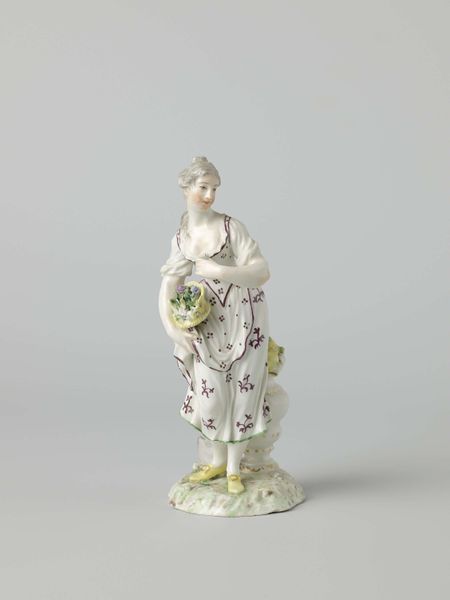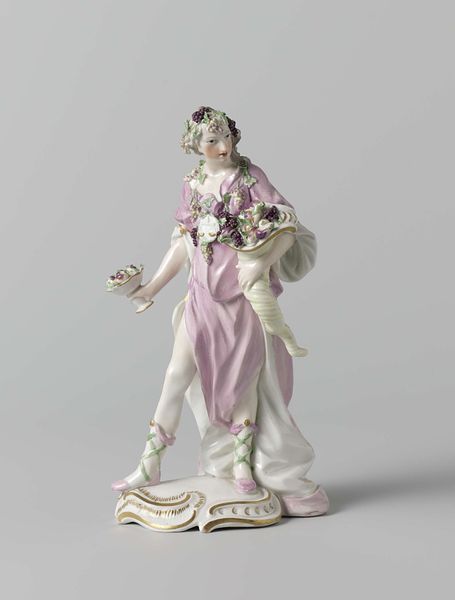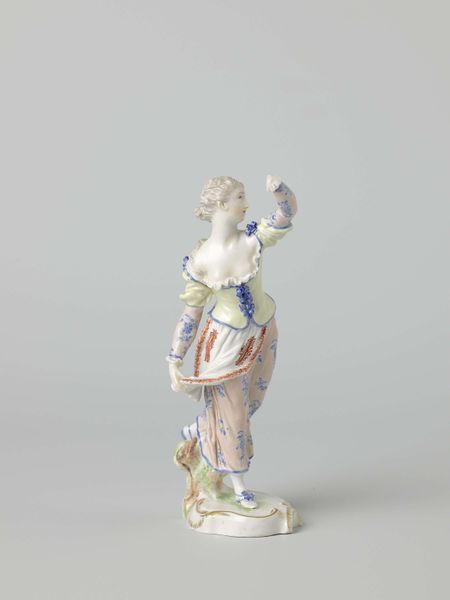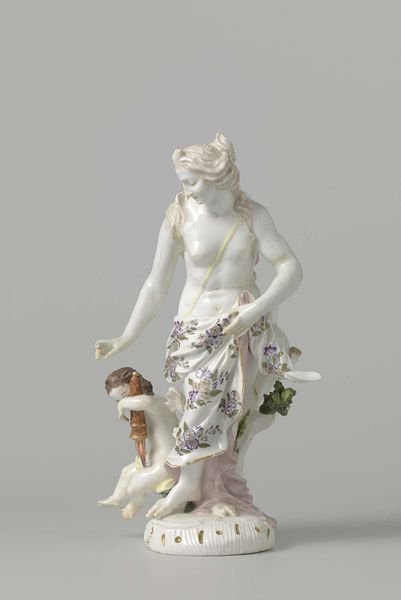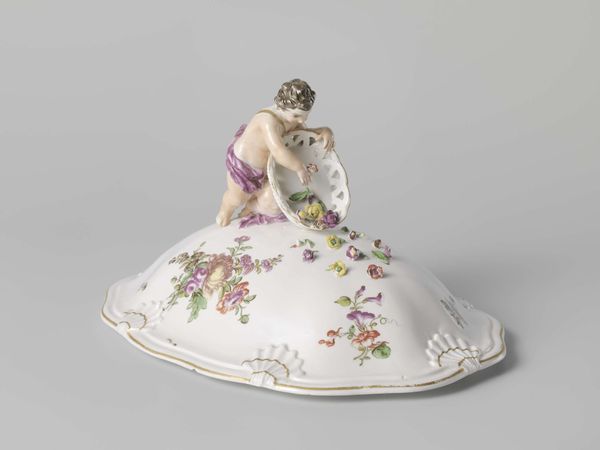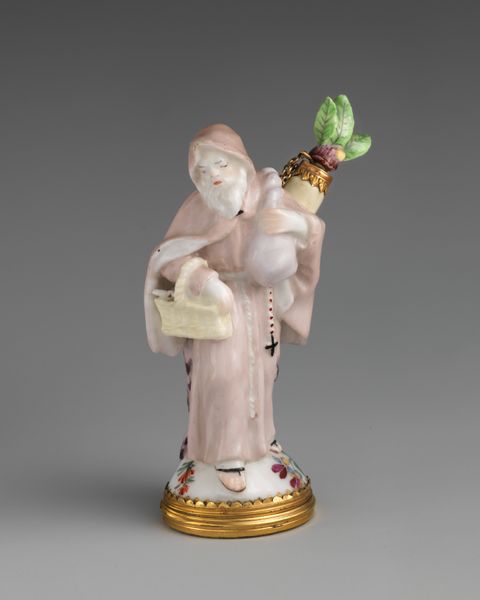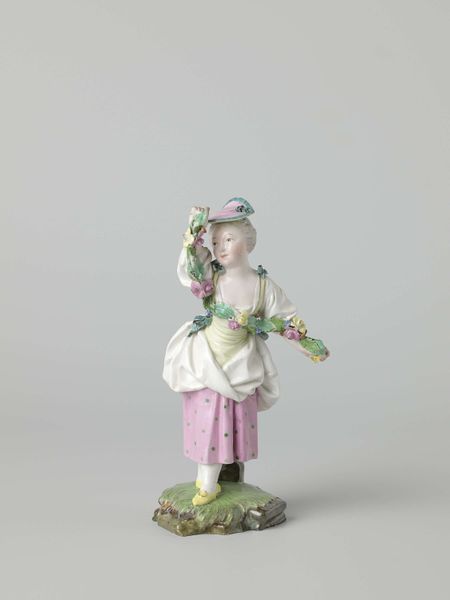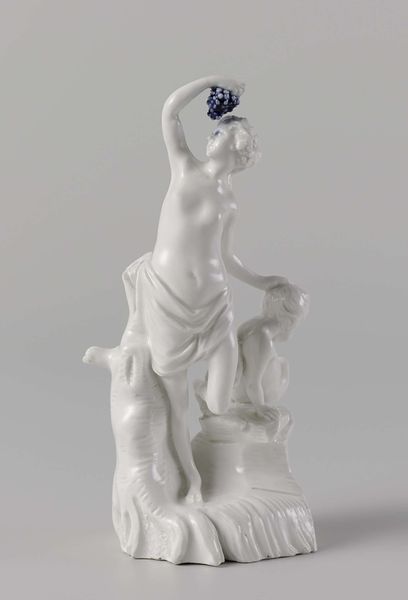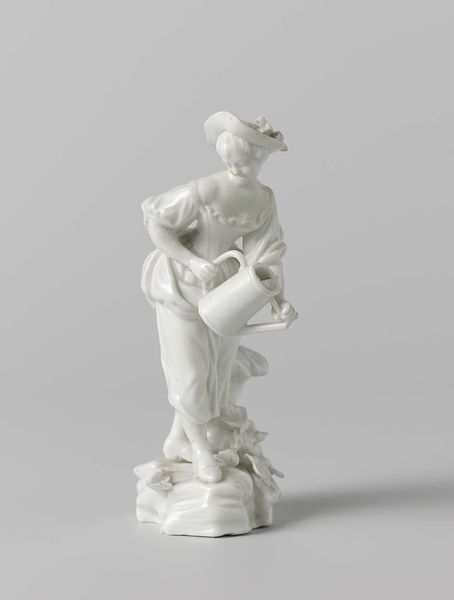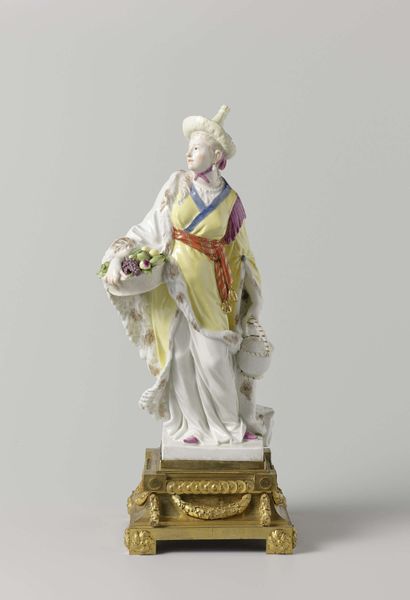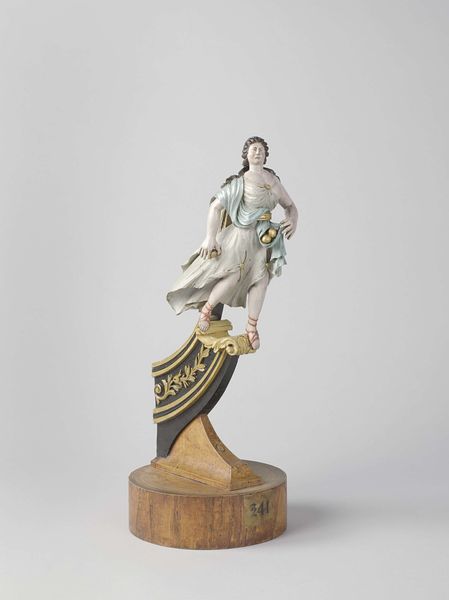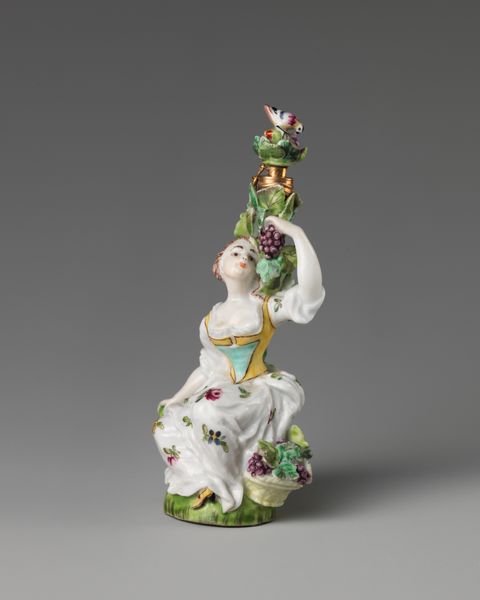
ceramic, porcelain, sculpture
#
ceramic
#
porcelain
#
figuration
#
sculpture
#
rococo
Dimensions: height 17.4 cm, width 7.5 cm, depth 8.5 cm
Copyright: Rijks Museum: Open Domain
Editor: Here we have "Figure of a Woman with Fish," a porcelain sculpture made around 1763-1767 by the Porseleinfabriek Ludwigsburg. The first thing I notice is its delicate Rococo style – it feels so light and airy. What strikes you when you look at this piece? Curator: Well, considering the historical context, I immediately think about the rise of porcelain manufactories during the 18th century. These weren’t just artistic ventures; they were deeply tied to economic and political power. Do you think this piece speaks to the societal aspirations of the time? Editor: That's a good question. The Rococo style was often associated with the aristocracy and their taste for ornate and whimsical objects. The fact that this figure has a fish adds another layer – perhaps hinting at abundance and connection to nature. It does feel very aspirational in a way. But who was the intended audience? Curator: Precisely! It's crucial to consider the patronage system. Royal and aristocratic families often commissioned these works. So, in a way, objects like these are artifacts that reveal social dynamics, consumer culture, and how powerful people wished to see and represent themselves. Editor: So this seemingly delicate figurine embodies complex social and economic histories. I’d never have thought of it that way! Curator: Absolutely. Examining art through its history helps us see it less as a precious object, and more as a reflection of the people, the institutions, and the times that created it. Editor: I see that! Now, I look at this work with new eyes, considering not just aesthetics, but its fascinating story. Curator: Indeed. Art has so much to teach us when we approach it through its historical role and political implications!
Comments
No comments
Be the first to comment and join the conversation on the ultimate creative platform.
